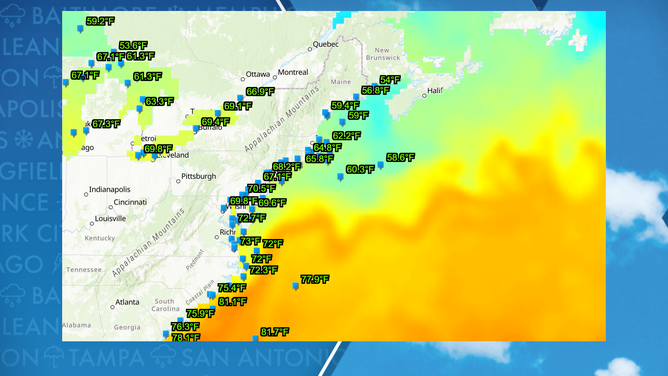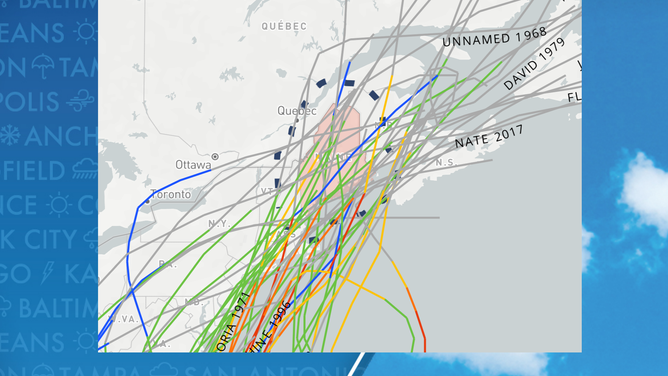Tropical trouble for Maine is rare but not unheard of
The combination of cool water temperatures, geographic location and upper levels winds, make it difficult for Maine to be directly impacted when a tropical cyclone is at its peak. Hurricane Lee produced hurricane-force wind gusts in Maine in 2023 but made landfall as a post-tropical cyclone in nearby Canada. The El Niño pattern usually leads to a decrease in activity but the 2023 has bucked the trend of limited activity.
Storms remain dangerous after losing tropical characteristics
Dangers remain after tropical cyclones become classified as post-tropical systems.
A busy hurricane season means the chances of impacts along the U.S. coastline are generally higher, but the prevalence of cold fronts and ridges of high pressure can dictate where the cyclones go.
Maine is one of seventeen states that has a coastline along the Atlantic basin and can be threatened by tropical cyclones, but seeing a landfalling system in the Pine Tree State is a rarity.
The last time a hurricane made landfall in the state was back in 1969 when Category 1 Gerda struck Eastport, Maine.
Despite not experiencing a landfall in more than 50 years, impacts from a tropical system are more common, with effects experienced several times during a decade.
A combination of factors, including cool water temperatures, geographic location and upper-level winds, make it difficult for Maine to be directly impacted when a tropical cyclone is at its peak.

Water temperatures in the western Atlantic
(FOX Weather)
WHAT WAS THE LAST HURRICANE TO MAKE LANDFALL IN MAINE?
During the late summer and fall peak, average water temperatures in the Gulf of Maine struggle to stay above 70 degrees, which is rather cool for a tropical storm or a hurricane. Usually, a tropical cyclone requires water temperatures of at least 80 degrees or warmer for organization.
Damage produced whether cyclone is a hurricane or not
Hurricane Lee was the latest cyclone to produce hurricane-force wind gusts in Maine but made landfall as a post-tropical cyclone in nearby Canada.
The 2023 hurricane season could end up being one of the more impactful years in recent memory due in part to Lee and for what Philippe may produce across New England.
While neither will be categorized as a bonified tropical cyclone, impacts can be significant across the state.
WHEN IS THE TYPICAL LAST HURRICANE STRIKE ON THE US COAST?

Since 1950, at least 44 significant cyclones have traveled over of near Maine.
(NOAA)
The Maine coastline consists of nearly 3,500 miles of bays, inlets and oceans, which makes it susceptible to nor’easters and other significant coastal events.
Flooding and downing of trees are usually the main concerns when an event impacts the state of more than a million people.
A season of heavy rainfall, before entering the heart of the tropical cyclone activity, can lead to even more wide-ranging impacts, including making the area more susceptible to landslides and flooding.
Emergency management agencies across the state work on preparedness year-round to ensure they are ready to respond to any disaster and encourage residents to have emergency kits in place in case they are needed during any storm
